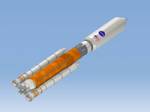2005 plus long que prévu
Page 1 sur 1
Wait a sec for leap into 2006
World time keepers stretch minute to 61 seconds
story.leap.year.second.jpg
YOUR E-MAIL ALERTS
National Institute of Standards & Technology (NIST)
or Create Your Own
Manage Alerts | What Is This?
WASHINGTON (Reuters) -- Get ready for a minute with 61 seconds. Scientists are delaying the start of 2006 by the first "leap second" in seven years, a timing tweak meant to make up for changes in the Earth's rotation.
The adjustment will be carried out by sticking an extra second into atomic clocks worldwide at the stroke of midnight Coordinated Universal Time, the widely adopted international standard, the U.S. National Institute of Standards and Technology said this week.
"Enjoy New Year's Eve a second longer," the institute said in an explanatory notice. "You can toot your horn an extra second this year."
Coordinated Universal Time coincides with winter time in London. On the U.S. East Coast, the extra second occurs just before 7 p.m. on New Year's Eve. Atomic clocks at that moment will read 23:59:60 before rolling over to all zeros.
A leap second is added to keep uniform timekeeping within 0.9 second of the Earth's rotational time, which can speed up or slow down because of many factors, including ocean tides. The first leap second was added on June 30, 1972, according to NIST, an arm of the U.S. Commerce Department.
High-speed communications systems among other modern technologies require precise time measurements.
Since 1999 until recently, the two time standards have been in close enough synch to escape any need to add a leap second, NIST said.
Although it is possible to have a negative leap second -- that is, a second deducted from Coordinated Universal Time -- so far all have been add-ons, reflecting the Earth's general slowing trend due to tidal breaking.
Deciding when to introduce a leap second is the responsibility of the International Earth Rotation and Reference Systems Service, a standards-setting body. Under an international pact, the preference for leap seconds is December 31 or June 30.
On pourra fêter un peu plus longtemps

Ouij 'ai vu cela au JT aussi. 1sec de plus en 2005, on aura 23h59mn60sec avant de passer à 0h0mn0sec. C'est original.
Ca va donner du boulot aux ingé du spatiale parceque dans ce domaine 1sec c'est beaucoup pour recaler tous les sat et appareils de mesures ou de poursuites.
Ca va donner du boulot aux ingé du spatiale parceque dans ce domaine 1sec c'est beaucoup pour recaler tous les sat et appareils de mesures ou de poursuites.
petit pour nous mais pas pour tous ceux qui bossent en rapport avec la mécanique spatiale...Ils vont manger du calcul et je les plaint...

BDL-DAO- Messages : 373
Inscrit le : 12/11/2005
Age : 37
Localisation : Les pieds sur Terre, la tête dans l'Espace...
 Sujets similaires
Sujets similaires» Lancement Ariane 5 ECA VA223 / DirecTV-15 + SkyMexico 1 - 27 mai 2015
» Comment prolonger l'ISS après 2024
» [Phoenix] la mission
» Discovery STS-114 (2005)
» Air & Cosmos - 2005
» Comment prolonger l'ISS après 2024
» [Phoenix] la mission
» Discovery STS-114 (2005)
» Air & Cosmos - 2005
Page 1 sur 1
Permission de ce forum:
Vous ne pouvez pas répondre aux sujets dans ce forum
 Portail
Portail


 Mar 27 Déc 2005 - 3:17
Mar 27 Déc 2005 - 3:17



